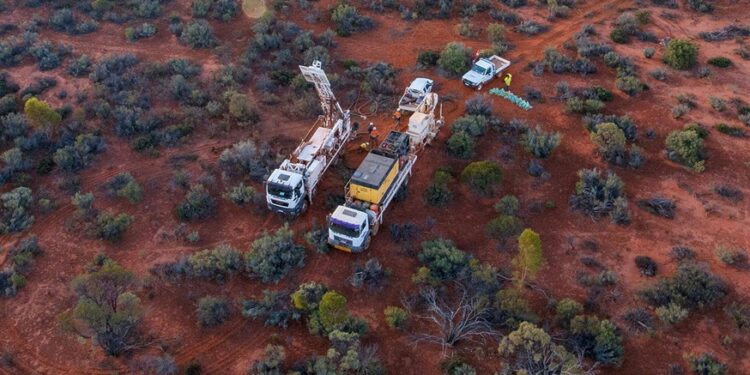Codrus Minerals (ASX: CDR) has confirmed the discovery of a significant clay-hosted rare earth element (REE) system with strong growth potential with assay results from a maiden RC drill programme at its recently acquired Karloning REE-Niobium Project in Western Australia.
Following the prioritised results for the top 40m of the first hole, KGRC001, assay results have now been received for the balance of the 13-hole/1,906m programme.
All holes that intersected the clay zone have returned enriched clay-hosted REE mineralization across multiple high-grade REE intercepts, confirming the Karloning Project’s credentials as an outstanding REE growth opportunity.
In November 2022, Codrus entered into a farm-in and joint venture agreement with Talgomine Minerals Pty Ltd to earn up to a 90% interest in the Karloning Project, which is located in Western Australia’s Wheatbelt region.
The company has also pegged an additional tenement adjacent to this in its own right.
Managing Director, Shannan Bamforth, said the company believes the project offers compelling exploration potential for the high-value REE’s used in the manufacture of high-strength permanent magnets – namely praseodymium, neodymium, terbium and dysprosium.
These elements are in high demand because of the explosive growth in industries that rely on permanent rare earth magnets, such as electric vehicles, wind turbines and other renewable energy applications.
Managing Director, Shannan Bamforth, said:
“The balance of assay results from our maiden 13-hole drill programme have confirmed that we have a significant shallow clay-hosted REE discovery on our hands at Karloning,” Mr Bamforth said.
“The assay results have revealed multiple thick intercepts of high-grade clay-hosted REE mineralization over a zone measuring around 400m by 300m, with the clay-hosted REE zone remaining open to the south-west, north-east and south-east. Encouragingly, the grade profile of the intercepts is remarkably consistent across the width of the mineralized zones.
“Given that up to 25 per cent of the mineralization is contained in the four key high-value REE’s used in rare earth magnets, this is rapidly shaping up as a significant REE discovery in a potentially exciting new rare earths province.
“The next steps for us are to review the full suite of data from the drilling before planning the next phase of follow- up, which is likely to comprise wide-spaced air-core drilling to test the overall scale of the REE system.”
The Karloning Project can be easily accessed by sealed roads via the town of Mukinbudin.
Future Work
Following the outstanding results returned from the company’s maiden drilling programme, an air-core (AC) drilling programme is being planned to allow the company to rapidly investigate the potential scale of the clay hosted mineralization at the project.
A drilling contractor has been secured and permitting for the programme is underway.
The company is also preparing to select samples for leaching test work of the clay zone mineralization. A suitable laboratory will be contracted for this work.
For further information please visit: https://codrusminerals.com.au/












